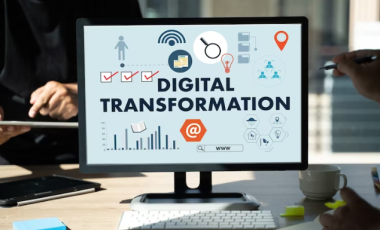Differentiating Digital Transformation from IT Enablement: A Comprehensive Tool for Evaluation
Introduction
Digital transformation and IT enablement are two distinct initiatives that organizations often encounter in their pursuit of modernizing their operations. These terms are sometimes used interchangeably despite their differences, leading to confusion in the business landscape. However, it is essential to understand that these initiatives differ significantly in their objectives, scope, and impact. This blog post will dive deep into the distinctions between Digital Transformation and IT Enablement and provide real-world examples to help business owners make informed decisions.
Digital Transformation
Digital Transformation goes beyond IT and touches upon every aspect of an organization. It involves a comprehensive and strategic shift in how businesses operate, embracing digital technologies to drive innovation, improve customer experiences, and achieve a competitive advantage.
Example: A leading retail brand embarks on a Digital Transformation journey by launching an interactive mobile app that offers personalized recommendations based on customer preferences. The app enhances customer experiences and collects valuable data for strategic decisions and marketing campaigns.
IT Enablement
On the other hand, IT Enablement focuses on optimizing existing business processes through technology, primarily enhancing efficiency, reducing costs, and automating repetitive tasks. It typically targets specific departments or workflows within the organization.
Example: An HR consulting firm adopts IT Enablement by implementing an integrated HR management system. This streamlines the recruitment process, reduces paperwork, and increases the efficiency of HR operations.
Distinctions Between Digital Transformation and IT Enablement
Scope and Objectives
Digital Transformation
Comprehensive and strategic, focusing on transforming the entire organization, including culture, business models, and customer experiences.
Example: A large retail chain embarks on a digital transformation initiative to create an omnichannel shopping experience for customers. This involves integrating online and offline sales channels, leveraging data analytics for personalized product recommendations, and redefining the organization's culture to embrace digital innovation.
IT Enablement
Specific and tactical, targeting optimization and automation of existing business processes.
Example: A manufacturing company implements an IT enablement project to automate its inventory management system. The objective is to optimize the supply chain by using technology to track inventory levels, reorder products automatically, and reduce manual inventory checks.
Impact
Digital Transformation
Far-reaching impact, often resulting in a competitive edge and market differentiation.
Example: A healthcare organization undergoes a digital transformation by adopting telemedicine services, enabling remote patient consultations, and implementing electronic health records. This transformation improves patient care, increases accessibility to healthcare services, and positions the organization as a leader in telemedicine.
IT Enablement
Localized impact, enhancing efficiency within specific operational areas.
Example: A customer service center implements a chatbot system to handle frequently asked questions and automate customer support inquiries. This IT enablement initiative reduces call waiting times and improves customer satisfaction in customer support.
Approach
Digital Transformation
Disruptive and transformative, challenging the status quo and fostering a culture of innovation.
Example: A financial institution undergoes a digital transformation by shifting from traditional in-person banking to a digital-first approach. This involves redesigning customer interfaces, offering online financial services, and adopting blockchain technology for secure and transparent transactions.
IT Enablement
Incremental, focused on solving immediate challenges and delivering quick wins.
Example: An educational institution implements an IT enablement project to upgrade its learning management system. This initiative aims to enhance the student learning experience by offering online courses, tracking student progress, and providing real-time feedback to educators.
Technology Adoption
Digital Transformation
Embraces emerging technologies to drive innovation and create new value for customers.
Example: An e-commerce company embraces digital transformation by adopting artificial intelligence and machine learning algorithms to offer personalized product recommendations, predict customer preferences, and optimize pricing strategies.
IT Enablement
Primarily adopts existing technologies and best practices to streamline operations.
Example: A human resources department adopts IT enablement by implementing a cloud-based HR management system. This system streamlines HR processes, such as recruitment, employee onboarding, and payroll management, increasing operational efficiency.
Conclusion
Understanding the distinction between Digital Transformation and IT Enablement is important for making informed decisions. While both initiatives involve leveraging technology, they differ significantly in scope, impact, and approach. By aligning your proposal with the appropriate path, you can set your business on a transformative journey that maximizes growth, efficiency, and success in the digital age. Remember, each approach has unique benefits, and selecting the right one can position your organization for a competitive advantage in an ever-evolving digital landscape.
References:
- Digital Transformation is not about technology, HBR, Last accessed on 22nd July 2023
- Digitizing Isn’t the Same as Digital Transformation, HBR, Last accessed on 22nd July 2023
- The Form and Content of Digital Transformation, Zyxware Technologies, Last accessed on 22nd July 2023



